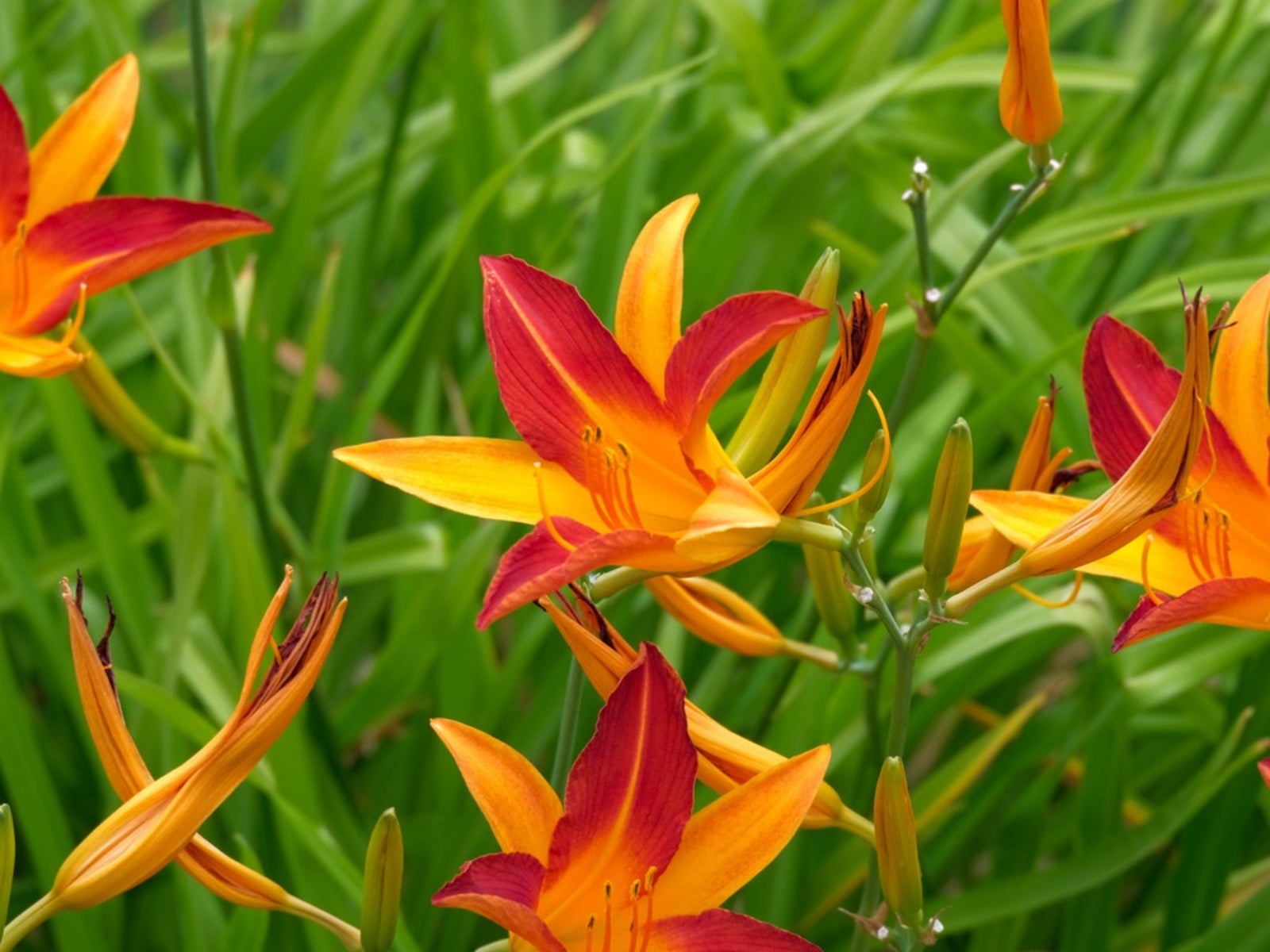Caring For Daylilies: How To Grow Daylilies


Growing daylilies (Hemerocallis) has been a pleasure for gardeners for centuries. From the 15 or so original species found in the Orient and Central Europe, we now have approximately 35,000 hybrids from which to choose and more are coming every year. Older, traditional plants die back during winter, but there are new semi- and evergreen varieties.
While their beautiful flowers last only one day, a mature clump can produce 200-400 blooms over the course of a month or more.
Planting daylilies as single specimens or en masse as a ground cover for a slope, these lovelies will make a welcome addition to any garden, but are of particular joy to the weekend gardener who simply doesn't have time for fussier plantings. Caring for daylilies is so easy and these plants are so hardy, that some seem to even thrive on neglect!
Planting Daylilies
Although early spring or early fall are the best time for planting daylilies, you can plant them successfully as long as you can dig the hole. Caring for daylilies begins with planting. If your soil is sandy or heavy clay, amend it with plenty of organic matter. In discussing how to grow daylilies, it should also be noted that they prefer slightly acid soil, but again, are adaptable.
Choose a site where your growing daylilies will receive at least six hours of sun. Morning sun is best, particularly in warmer areas where the blazing afternoon sun can scorch the leaves. Here again, these hardy plants will grow with less, but blooming won't be as prolific.
Cut the foliage back to 6 inches (15 cm.). Dig your hole twice as wide and deep as the root spread. Place the plant so the crown (the part where the roots meet the stem) is about 1 inch (2.5 cm.) below ground level. Fill in the hole with your amended soil and water well.
After planting daylilies, keep them well watered for a few weeks until the roots are established. Daylilies are vigorous growers and can be divided every three or four years. Because of the number of varieties, they make great specimens to trade with neighbors and friends.
Sign up for the Gardening Know How newsletter today and receive a free copy of our e-book "How to Grow Delicious Tomatoes".
Information on Caring for Daylilies
How to grow daylilies? It would be easy to say stick them in the ground and walk away, but there are a few things you can do when caring for daylilies to get the most out of these tough growers.
A basic 10-10-10 fertilizer in the spring and during bloom is all you need, though gardeners who specialize in daylily care will recommend more often. Once established, these hardy plants will tolerate drought. Water as needed.
Once up and growing, daylilies perform best if you remove the seed pods. Leaving them on the plant will retard the following year's bloom. In early spring, daylily care consists of removing the dead leaves from the surrounding ground and weeding.
A cover of mulch will keep the weeds down though it isn't necessary for the plant itself. Once full grown, a daylily's leaves are so thick, they tend to shade out surrounding weeds.
Disease is rare among the varieties of daylily. Care should be taken, however, when it comes to aphids or thrips and usually the problem begins with other garden plants first. An application of all-purpose insecticide, whether organic or chemical, or a strong spray of water usually takes care of the problem.
Now that you know how to grow daylilies and how easy caring for daylilies is, it's time to ask the neighbors for donations or to purchase a few from your local garden center or catalogue. I guarantee you'll be glad you did.
Note: Any recommendations pertaining to the use of chemicals are for informational purposes only. Chemical control should only be used as a last resort, as organic approaches are safer and more environmentally friendly.

Jackie Rhoades began writing for Gardening Know How in 2010.